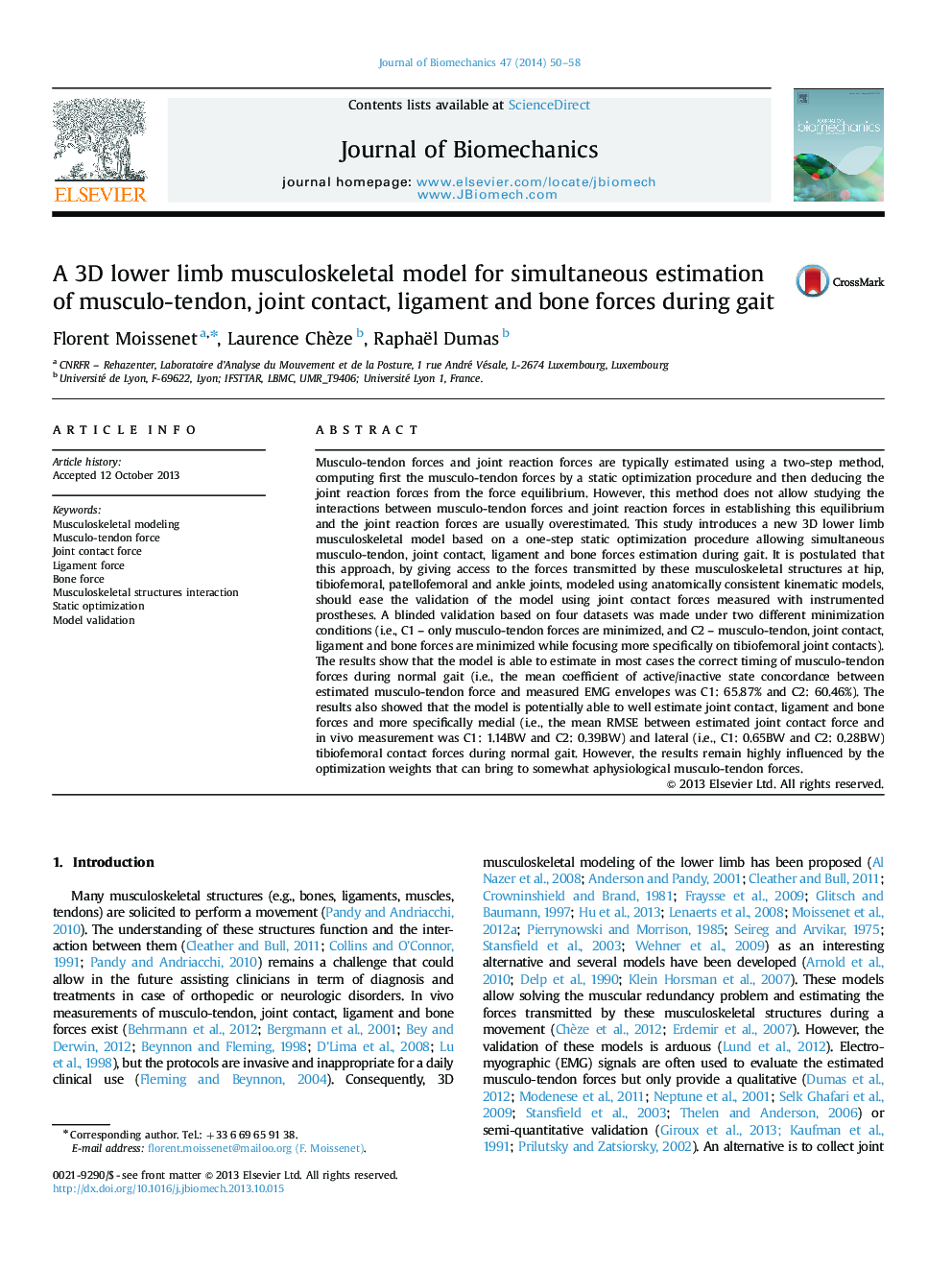| کد مقاله | کد نشریه | سال انتشار | مقاله انگلیسی | نسخه تمام متن |
|---|---|---|---|---|
| 872155 | 910238 | 2014 | 9 صفحه PDF | دانلود رایگان |
Musculo-tendon forces and joint reaction forces are typically estimated using a two-step method, computing first the musculo-tendon forces by a static optimization procedure and then deducing the joint reaction forces from the force equilibrium. However, this method does not allow studying the interactions between musculo-tendon forces and joint reaction forces in establishing this equilibrium and the joint reaction forces are usually overestimated. This study introduces a new 3D lower limb musculoskeletal model based on a one-step static optimization procedure allowing simultaneous musculo-tendon, joint contact, ligament and bone forces estimation during gait. It is postulated that this approach, by giving access to the forces transmitted by these musculoskeletal structures at hip, tibiofemoral, patellofemoral and ankle joints, modeled using anatomically consistent kinematic models, should ease the validation of the model using joint contact forces measured with instrumented prostheses. A blinded validation based on four datasets was made under two different minimization conditions (i.e., C1 – only musculo-tendon forces are minimized, and C2 – musculo-tendon, joint contact, ligament and bone forces are minimized while focusing more specifically on tibiofemoral joint contacts). The results show that the model is able to estimate in most cases the correct timing of musculo-tendon forces during normal gait (i.e., the mean coefficient of active/inactive state concordance between estimated musculo-tendon force and measured EMG envelopes was C1: 65.87% and C2: 60.46%). The results also showed that the model is potentially able to well estimate joint contact, ligament and bone forces and more specifically medial (i.e., the mean RMSE between estimated joint contact force and in vivo measurement was C1: 1.14BW and C2: 0.39BW) and lateral (i.e., C1: 0.65BW and C2: 0.28BW) tibiofemoral contact forces during normal gait. However, the results remain highly influenced by the optimization weights that can bring to somewhat aphysiological musculo-tendon forces.
Journal: Journal of Biomechanics - Volume 47, Issue 1, 3 January 2014, Pages 50–58
